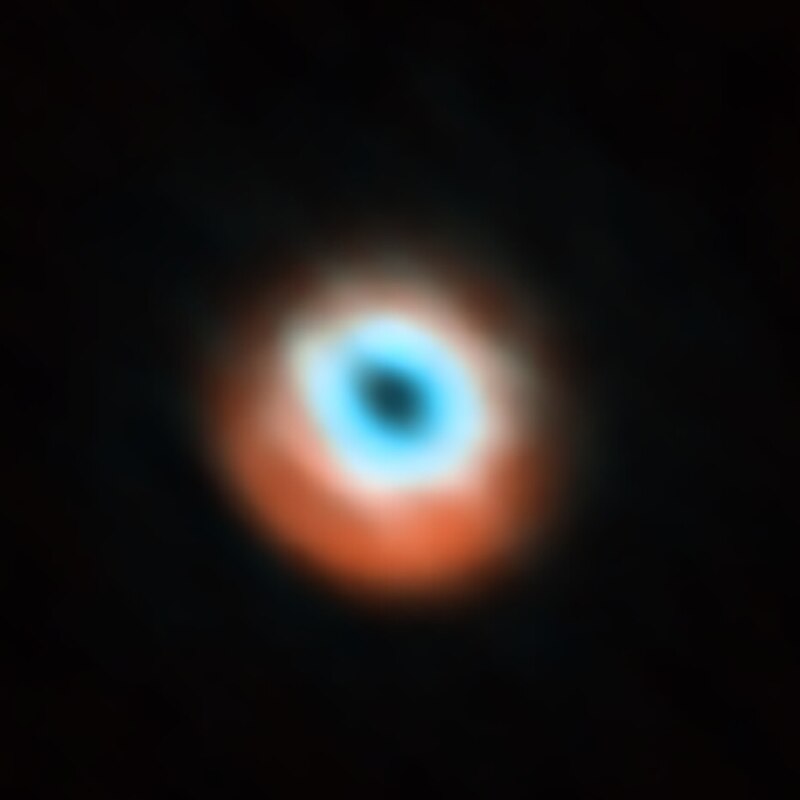Astronomers Discover Forming Planet Carving Cosmic Patterns

In a groundbreaking discovery, astronomers have captured the formation of a planet in real-time, as it carves intricate patterns within a protoplanetary disc of gas and dust surrounding the star HD 135344B, located approximately 440 light-years from Earth. Utilizing the European Southern Observatory's (ESO) Very Large Telescope (VLT), researchers observed a noteworthy spiral structure in the disc, providing compelling evidence of a planet candidate embedded within its inner regions. This significant finding was detailed in a study led by Francesco Maio, a doctoral researcher at the University of Florence, published on July 21, 2025, in the journal Astronomy & Astrophysics.
"We will never witness the formation of Earth, but here, around a young star 440 light-years away, we may be watching a planet come into existence in real time," remarked Maio, who is based at the Arcetri Astrophysical Observatory, part of Italy's National Institute for Astrophysics (INAF).
The potential planet, estimated to be twice the size of Jupiter, rests at a distance from its host star comparable to that of Neptune from the Sun. Its presence is indicated by the unique dynamics observed within the surrounding protoplanetary disc, which showcases a variety of structures such as rings, gaps, and spirals. According to Maio, these formations are traditionally attributed to the gravitational influence of forming planets that sweep up surrounding material as they orbit their parent stars.
Previously, another team of astronomers had employed SPHERE, an instrument on the VLT, to detect swirling spiral arms within the disc. However, these earlier observations had not provided definitive proof of a planet forming within the disc. With the advanced capabilities of the VLT's Enhanced Resolution Imager and Spectrograph (ERIS), the current research has yielded the first concrete evidence of a planet candidate shaping its environment. "What makes this detection potentially a turning point is that, unlike many previous observations, we are able to directly detect the signal of the protoplanet, which is still highly embedded in the disc," Maio explained, emphasizing the enhanced confidence in the planet's existence due to direct observations of its emitted light.
In a separate but related study, another team of astronomers led by Anuroop Dasgupta at ESO and Diego Portales University in Chile utilized the ERIS instrument to investigate the young star V960 Mon. Their findings, published on July 18, 2025, in The Astrophysical Journal Letters, noted the presence of a companion object within the disc, the nature of which remains uncertain. This companion could potentially be a planet in formation or a brown dwarf—a substellar object that lacks sufficient mass to initiate nuclear fusion like a star.
This discovery of the forming planet around HD 135344B marks an essential milestone in understanding planetary formation processes, as it offers a rare glimpse into the evolutionary mechanisms that lead to the birth of planets. Protoplanetary discs have long been theorized to harbor the early stages of planet formation, but direct observation of these processes has remained elusive.
The research conducted on HD 135344B and V960 Mon is part of a broader initiative aimed at uncovering the mysteries of planet formation and the early life of stars. As noted by Dr. David Fedele, a co-author from the Arcetri Astrophysical Observatory, the collaboration across institutions and countries underscores the international effort to advance our understanding of the cosmos.
Astronomers hope that continued observations using advanced technologies such as the VLT and ALMA (Atacama Large Millimeter/submillimeter Array) will further illuminate the characteristics of protoplanetary discs and the formation of planetary bodies within them. This ongoing research may provide critical insights into the factors that contribute to the diversity of planetary systems observed throughout the universe. The implications of these findings extend beyond our solar system, offering potential clues about the conditions necessary for the emergence of life on other planets.
As the exploration of these cosmic phenomena progresses, researchers remain optimistic that future observations will yield additional discoveries that can reshape our understanding of the universe and our place within it.
Advertisement
Tags
Advertisement





